Changes in Regional Snowfall in Central North America (1961–2017): Mountain Versus Plains
Abstract
:1. Introduction
2. Data and Methods
2.1. Study Area and Data Selection
2.2. Statistical Analysis and Mapping
3. Results
3.1. Annual Snowfall Trends
3.2. Relating Snowfall Trends to Potential Factors
4. Discussion and Conclusions
Author Contributions
Funding
Conflicts of Interest
References
- Barnett, T.P.; Adam, J.C.; Lettenmaier, D.P. Potential Impacts of a Warming Climate on Water Availability in Snow-Dominated Regions. Nature 2005, 438, 303–309. [Google Scholar] [CrossRef] [PubMed]
- O’Gorman, P.A. Contrasting Responses of Mean and Extreme Snowfall to Climate Change. Nature 2014, 512, 416–418. [Google Scholar] [CrossRef] [PubMed] [Green Version]
- Hall, A. Projecting Regional Change. Science 2014, 346, 1461–1462. [Google Scholar] [CrossRef] [PubMed]
- Kluver, D.; Leathers, D. Regionalization of Snowfall Frequency and Trends over the Contiguous United States. Int. J. Climatol. 2015, 35, 4348–4358. [Google Scholar] [CrossRef]
- Leathers, D.J.; Mote, T.L.; Kuivinen, K.C.; McFeeters, S.; Kluck, D.R. Temporal Characteristics of USA Snowfall 1945–1946 through to 1984–1985. Int. J. Climatol. 1993, 13, 65–76. [Google Scholar] [CrossRef]
- Kunkel, K.E.; Palecki, M.; Ensor, L.; Hubbard, K.G.; Robinson, D.; Redmond, K.; Easterling, D. Trends in Twentieth-Century U.S. Snowfall Using a Quality-Controlled Dataset. J. Atmos. Ocean. Technol. 2009, 26, 33–44. [Google Scholar] [CrossRef] [Green Version]
- Kapnick, S.B.; Delworth, T.L. Controls of Global Snow under a Changed Climate. J. Clim. 2013, 26, 5537–5562. [Google Scholar] [CrossRef]
- Krasting, J.P.; Broccoli, A.J.; Dixon, K.W.; Lanzante, J.R. Future Changes in Northern Hemisphere Snowfall. J. Clim. 2013, 26, 7813–7828. [Google Scholar] [CrossRef] [Green Version]
- Karl, T.R.; Groisman, P.Y.; Knight, R.W.; Heim, R.R. Recent Variations of Snow Cover and Snowfall in North America and Their Relation to Precipitation and Temperature Variations. J. Clim. 1993, 6, 1327–1344. [Google Scholar] [CrossRef] [Green Version]
- Groisman, P.Y.; Easterling, D.R. Variability and Trends of Total Precipitation and Snowfall over the United States and Canada. J. Clim. 1994, 7, 184–205. [Google Scholar] [CrossRef] [Green Version]
- Feng, S.; Hu, Q. Changes in Winter Snowfall/Precipitation Ratio in the Contiguous United States. J. Geophys. Res. Atmos. 2007, 112. [Google Scholar] [CrossRef]
- Akinremi, O.O.; McGinn, S.M.; Cutforth, H.W. Precipitation Trends on the Canadian Prairies. J. Clim. 1999, 12, 2996–3003. [Google Scholar] [CrossRef]
- Hughes, M.G.; Robinson, D.A. Historical Snow Cover Variability in the Great Plains Region of the USA: 1910 through to 1993. Int. J. Climatol. 1996, 16, 1005–1018. [Google Scholar] [CrossRef]
- Knowles, N.; Dettinger, M.D.; Cayan, D.R. Trends in Snowfall versus Rainfall in the Western United States. J. Clim. 2006, 19, 4545–4559. [Google Scholar] [CrossRef] [Green Version]
- Wi, S.; Dominguez, F.; Durcik, M.; Valdes, J.; Diaz, H.F.; Castro, C.L. Climate Change Projection of Snowfall in the Colorado River Basin Using Dynamical Downscaling. Water Resour. Res. 2012, 48. [Google Scholar] [CrossRef] [Green Version]
- Bales, R.C.; Molotch, N.P.; Painter, T.H.; Dettinger, M.D.; Rice, R.; Dozier, J. Mountain Hydrology of the Western United States. Water Resour. Res. 2006, 42. [Google Scholar] [CrossRef]
- Quiring, S.M.; Kluver, D.B. Relationship between Winter/Spring Snowfall and Summer Precipitation in the Northern Great Plains of North America. J. Hydrometeor. 2009, 10, 1203–1217. [Google Scholar] [CrossRef]
- Menne, M.J.; Durre, I.; Korzeniewski, B.; McNeal, S.; Thomas, K.; Yin, X.; Anthony, S.; Ray, R.; Vose, R.S.; Gleason, B.E.; et al. Global Historical Climatology Network-Daily (GHCN-Daily), Version 3. NOAA National Climatic Data Center, 2012. Available online: https://data.nodc.noaa.gov/cgi-bin/iso?id=gov.noaa.ncdc:C00861 (accessed on 25 March 2020).
- Menne, M.J.; Durre, I.; Vose, R.S.; Gleason, B.E.; Houston, T.G. An Overview of the Global Historical Climatology Network-Daily Database. J. Atmos. Ocean. Technol. 2012, 29, 897–910. [Google Scholar] [CrossRef]
- Historical Data-Climate-Environment and Climate Change Canada. Available online: https://climate.weather.gc.ca/historical_data/search_historic_data_e.html (accessed on 19 October 2018).
- USGS—Water Resources of the United States. Available online: https://water.usgs.gov/nwc/explain_data.html (accessed on 11 April 2018).
- Danielson, J.J.; Gesch, D.B. Global Multi-Resolution Terrain Elevation Data 2010 (GMTED2010); U.S. Geological Survey Open-File Report 2011–1073; U.S. Geological Survey: Reston, VA, USA, 2011; p. 26.
- Huntington, T.G.; Hodgkins, G.A.; Keim, B.D.; Dudley, R.W. Changes in the Proportion of Precipitation Occurring as Snow in New England (1949–2000). J. Clim. 2004, 17, 2626–2636. [Google Scholar] [CrossRef]
- Cressie, N.A.C. Statistics for Spatial Data; Wiley: Hoboken, NJ, USA, 1993. [Google Scholar]
- Hunter, R.D.; Meentemeyer, R.K. Climatologically Aided Mapping of Daily Precipitation and Temperature. J. Appl. Meteorol. 2005, 44, 1501–1510. [Google Scholar] [CrossRef]
- Shahid, S. Rainfall Variability and the Trends of Wet and Dry Periods in Bangladesh. Int. J. Climatol. 2010, 30, 2299–2313. [Google Scholar] [CrossRef]
- Seager, R.; Lis, N.; Feldman, J.; Ting, M.; Williams, A.P.; Nakamura, J.; Liu, H.; Henderson, N. Whither the 100th Meridian? The Once and Future Physical and Human Geography of America’s Arid–Humid Divide. Part I: The Story So Far. Earth Interact. 2017, 22, 1–22. [Google Scholar] [CrossRef] [Green Version]
- Portmann, R.W.; Solomon, S.; Hegerl, G.C. Spatial and Seasonal Patterns in Climate Change, Temperatures, and Precipitation across the United States. Proc. Natl. Acad. Sci. USA 2009, 106, 7324–7329. [Google Scholar] [CrossRef] [PubMed] [Green Version]
- Mauget, S.A. Multidecadal Regime Shifts in U.S. Streamflow, Precipitation, and Temperature at the End of the Twentieth Century. J. Clim. 2003, 16, 3905–3916. [Google Scholar] [CrossRef] [Green Version]
- Laternser, M.; Schneebeli, M. Long-Term Snow Climate Trends of the Swiss Alps (1931–1999). Int. J. Climatol. 2003, 23, 733–750. [Google Scholar] [CrossRef]
- Mir, R.A.; Jain, S.K.; Saraf, A.K.; Goswami, A. Decline in Snowfall in Response to Temperature in Satluj Basin, Western Himalaya. J. Earth Syst. Sci. 2015, 124, 365–382. [Google Scholar] [CrossRef] [Green Version]
- Clow, D.W. Changes in the Timing of Snowmelt and Streamflow in Colorado: A Response to Recent Warming. J. Clim. 2009, 23, 2293–2306. [Google Scholar] [CrossRef]
- Fassnacht, S.R.; Venable, N.B.H.; McGrath, D.; Patterson, G.G. Sub-Seasonal Snowpack Trends in the Rocky Mountain National Park Area, Colorado, USA. Water 2018, 10, 562. [Google Scholar] [CrossRef] [Green Version]
- Chen, Z.; Grasby, S.E. Impact of Decadal and Century-Scale Oscillations on Hydroclimate Trend Analyses. J. Hydrol. 2009, 365, 122–133. [Google Scholar] [CrossRef]
- Venable, N.B.H.; Fassnacht, S.R.; Adyabadam, G.; Tumenjargal, S.; Fernández-Giménez, M.; Batbuyan, B. Does the Length of Station Record Influence the Warming Trend That is Perceived by Mongolian Herders near the Khangai Mountains? Pirineos 2012, 167, 69–86. [Google Scholar] [CrossRef] [Green Version]
- Davis, R.E.; Lowit, M.B.; Knappenberger, P.C.; Legates, D.R. A Climatology of Snowfall-Temperature Relationships in Canada. J. Geophys. Res. Atmos. 1999, 104, 11985–11994. [Google Scholar] [CrossRef]
- Simonovic, S.P.; Carson, R.W. Flooding in the Red River Basin—Lessons from Post Flood Activities. Nat. Hazards 2003, 28, 345–365. [Google Scholar] [CrossRef]
- Stadnyk, T.; Dow, K.; Wazney, L.; Blais, E.-L. The 2011 Flood Event in the Red River Basin: Causes, Assessment and Damages. Can. Water Resour. J.Rev. Can. Ressour. Hydr. 2016, 41, 65–73. [Google Scholar] [CrossRef]
- Wazney, L.; Clark, S.P. The 2009 Flood Event in the Red River Basin: Causes, Assessment and Damages. Can. Water Resour. J.Rev. Can. Ressour. Hydr. 2016, 41, 56–64. [Google Scholar] [CrossRef]
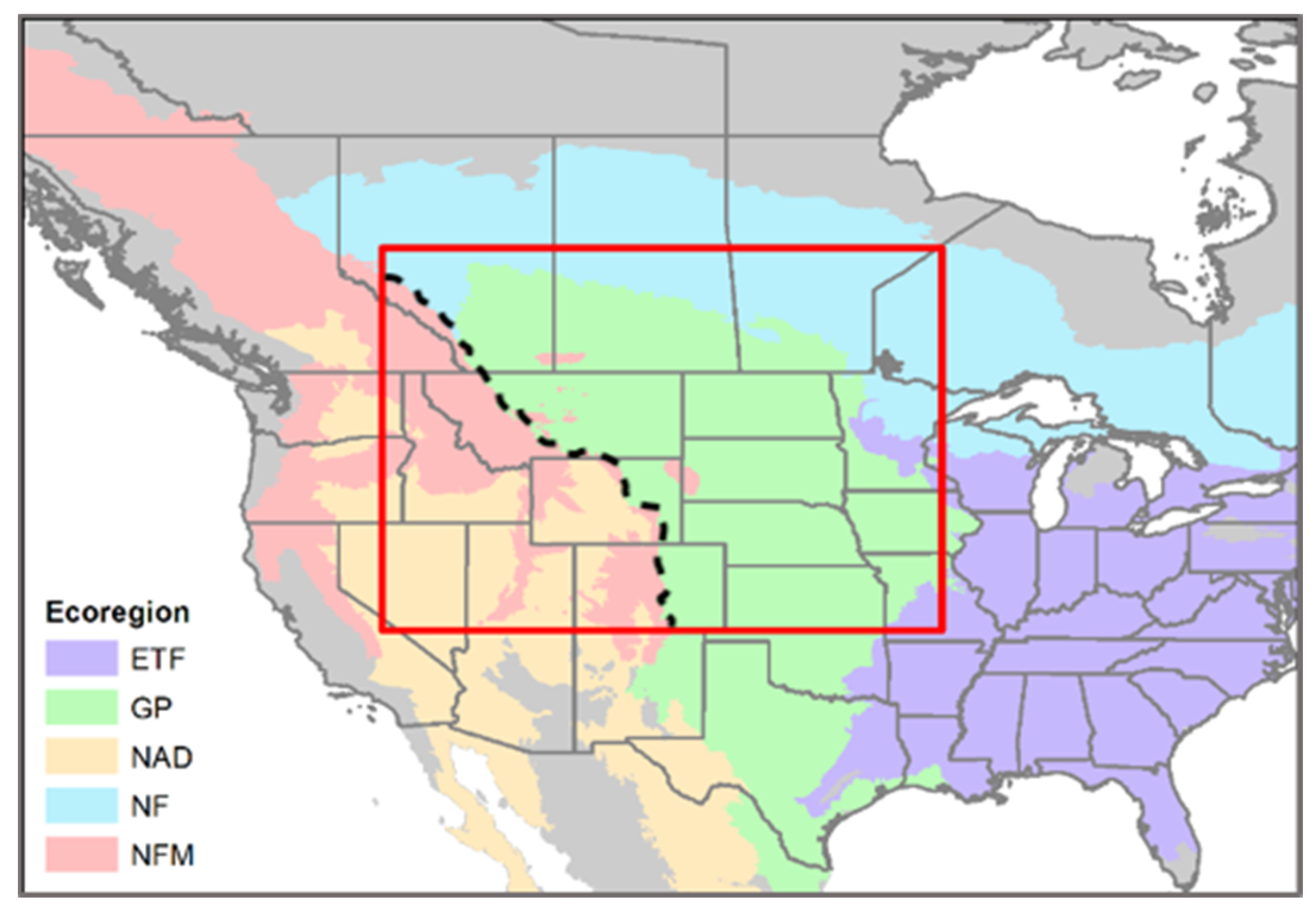
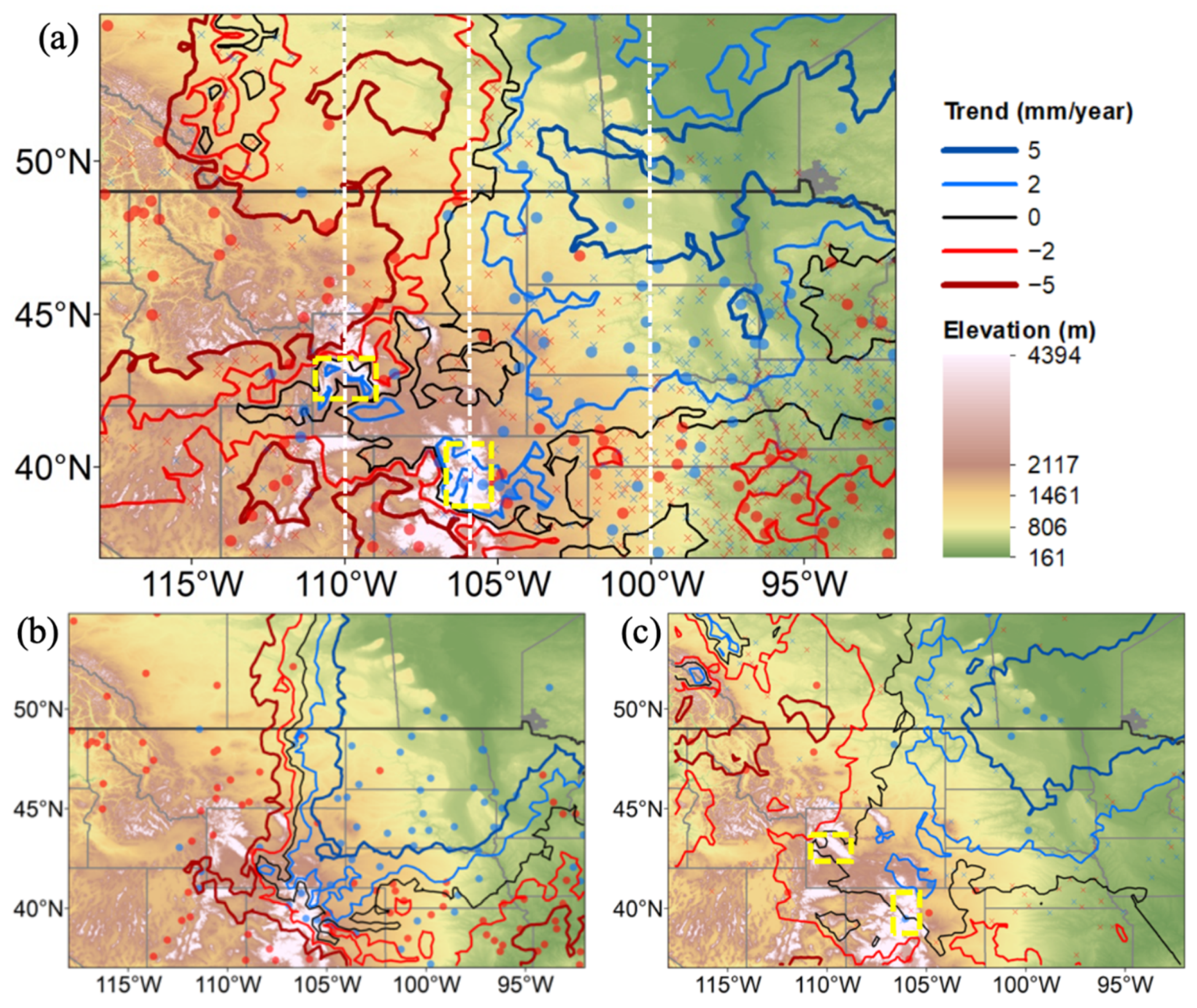
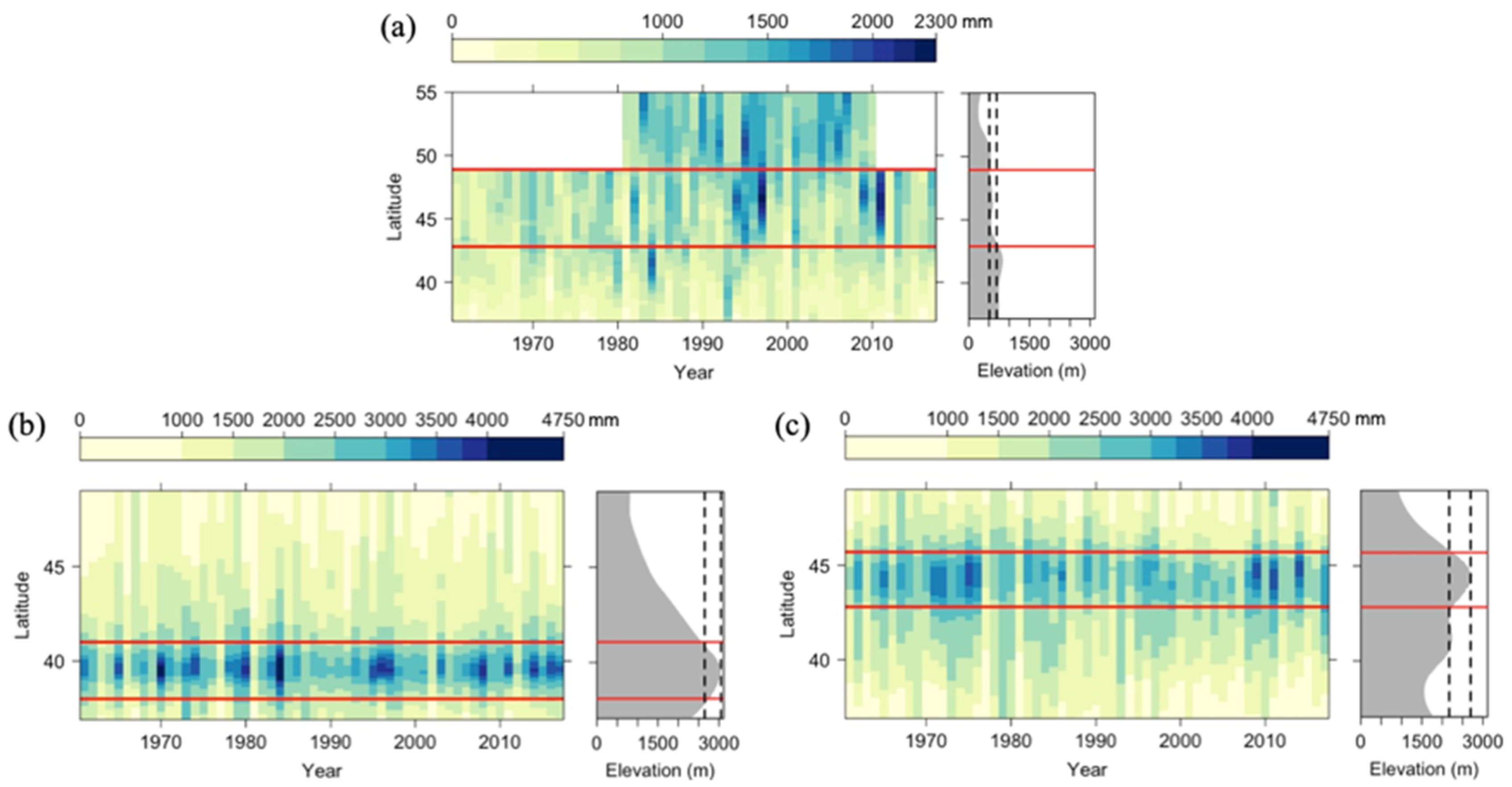
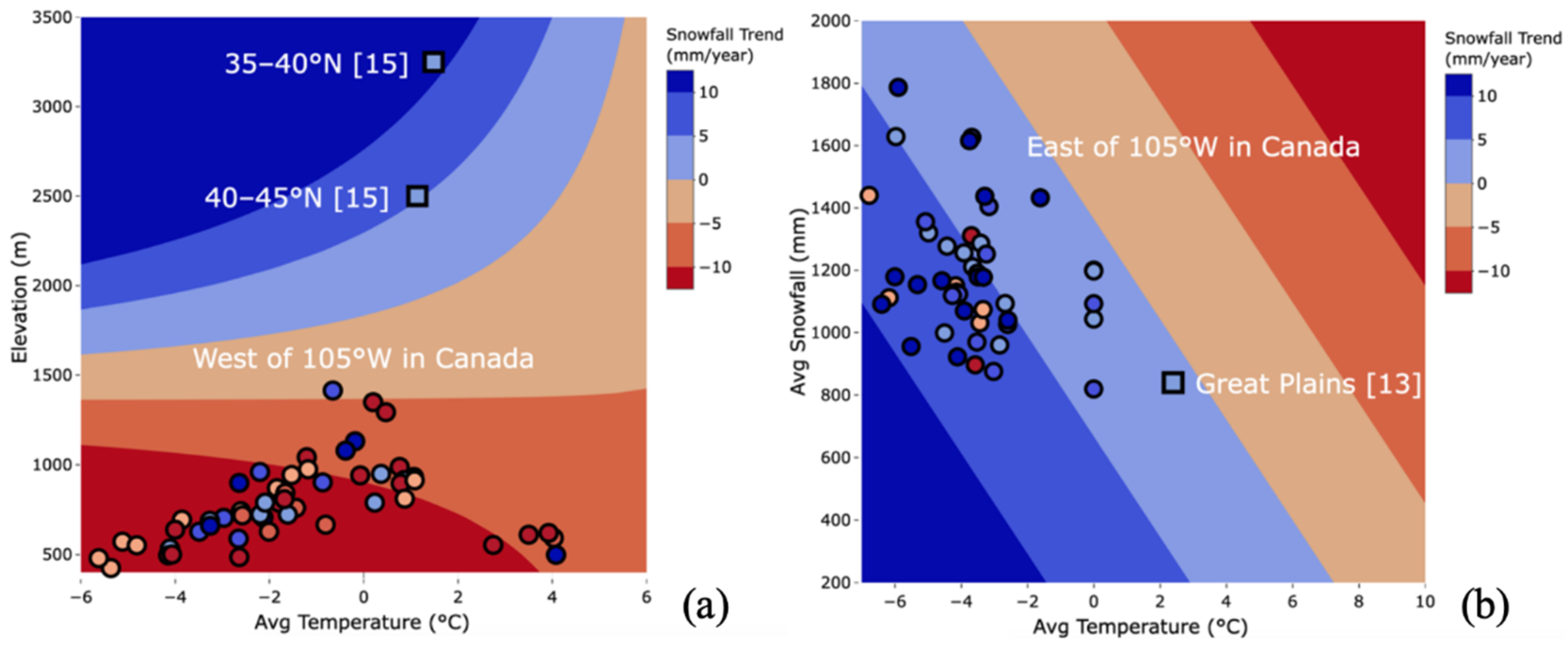

| Study | Study Region | Study Type | Study Period | Major Finding | ||
|---|---|---|---|---|---|---|
| 1 | Kapnick and Delworth [7] | Global | GCMs Prediction | 280-year based on 1990 level | Annual snowfall generally increase at 60° N and above, decrease below 60° N | 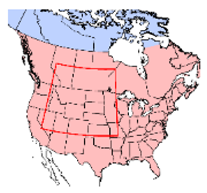 |
| 2 | Krasting et al. [8] | Northern Hemisphere | GCMs Prediction | 2006–2100 | ||
| 3 | O’Gorman [2] | Northern Hemisphere | GCMs Prediction | 1981–2000 to 2081–2100 | ||
| 4 | Karl et al. [9] | North America | Observation | 1950–1979 to 1980s | Annual snowfall increased at 55–70° N and decreased below 55° N. | 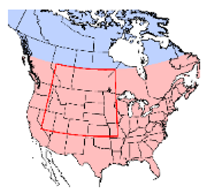 |
| 5 | Groisman and Easterling [10] | North America | Observation | 1950–1990 | Annual snowfall decreased at 45–55° N and increased in the rest of study area above 35° N. | 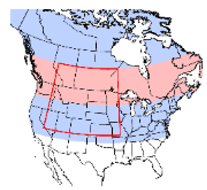 |
| 6 | Kunkel et al. [6] | Contiguous U.S. | Observation | 1930–2007 | Annual snowfall increased in the Great Plains and the southern Rocky Mountains, decreased in the northern Rocky Mountains. | 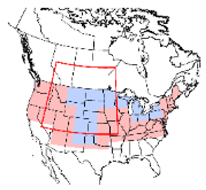 |
| 7 | Feng and Hu [11] | Contiguous U.S. | Observation | 1949–2005 | Winter SFE decreased in the west coast, mixed in the rest of the country. |  |
| 8 | Kluver and Leathers [4] | Contiguous U.S. | Observation | 1930–2007 | Annual snowfall events increased in the northern Great Plains, decreased in the southeast and from the Rocky Mountains to the western coast. | 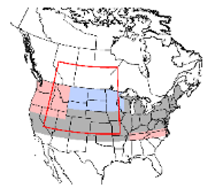 |
| 9 | Akinremi et al. [12] | Canadian Prairies | Observation | 1961–1995 | Annual snowfall significantly decreased in the entire study area. |  |
| 10 | Hughes and Robinson [13] | U.S. Great Plains | Observation | 1910–1993 | Annual snowfall significantly increased in the entire study area. |  |
| 11 | Knowles et al. [14] | Western U.S. | Observation | 1949–2004 | Winter SFE decreased along the west coast and in the northern Rocky Mountains, increased in the southern Rocky Mountains in New Mexico. | 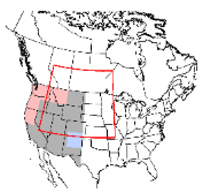 |
| 12 | Wi et al. [15] | Colorado River Basin | Observation | 1981–2005 | Winter SFE increased at high elevations in the mountains from 35 to 45° N, decreased in the rest of the study area. | 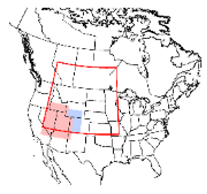 |
| 13 | Current Study | Central North America | Observation | 1961–2017 in the United States 1981–2010 in Canada | Annual total snowfall increased in North Dakota, South Dakota, and Manitoba, and in Front Range and Wind River Range. Decreased in the rest of the region. |  |
| Entire Study Area | Mountain Region | Plains Region | |||||||||||||
|---|---|---|---|---|---|---|---|---|---|---|---|---|---|---|---|
| N | Mean | SD | Min | Max | N | Mean | SD | Min | Max | N | Mean | SD | Min | Max | |
| Elevation (m) | 694 | 804 | 572 | 179 | 3451 | 149 | 1544 | 609 | 451 | 3451 | 545 | 601 | 352 | 179 | 2191 |
| Avg. Snowfall (mm) | 694 | 1056 | 863 | 175 | 9594 | 149 | 1788 | 1504 | 175 | 9594 | 545 | 856 | 381 | 205 | 3616 |
| Avg. Temperature (°C) | 561 | 2.0 | 3.6 | −8.2 | 11.3 | 131 | 2.2 | 2.8 | −5.2 | 11.3 | 430 | 2.0 | 3.8 | −8.2 | 9.2 |
| Snowfall Trend (mm/year) | 694 | −0.5 | 8.8 | −52.4 | 38.6 | 149 | −3.9 | 13.3 | −52.4 | 38.6 | 545 | 0.5 | 6.8 | −40.1 | 36.7 |
| Entire Study Area | Plains Region | Mountain Region | ||||
|---|---|---|---|---|---|---|
| No. of Observation | 459 | 344 | 115 | |||
| Coef. | p | Coef. | p | Coef. | p | |
| Elevation | 0.002 | 0.017 | −0.003 | 0.083 | 0.011 | 2 × 10−5 |
| Avg. Temperature | −0.558 | 0.003 | −1.649 | 2 × 10−12 | 2.054 | 0.086 |
| Avg. Snowfall | −0.004 | 2 × 10−12 | −0.007 | 2 × 10−8 | −0.004 | 3 × 10−5 |
| Elevation × Avg. Temperature | −5 × 10−4 | 0.008 | 0.001 | 0.001 | −0.002 | 0.019 |
| Model R2 | 0.125 | 0.171 | 0.186 | |||
© 2020 by the authors. Licensee MDPI, Basel, Switzerland. This article is an open access article distributed under the terms and conditions of the Creative Commons Attribution (CC BY) license (http://creativecommons.org/licenses/by/4.0/).
Share and Cite
Zhang, J.; Zheng, H.; Zhang, X.; VanLooy, J. Changes in Regional Snowfall in Central North America (1961–2017): Mountain Versus Plains. Geosciences 2020, 10, 157. https://doi.org/10.3390/geosciences10050157
Zhang J, Zheng H, Zhang X, VanLooy J. Changes in Regional Snowfall in Central North America (1961–2017): Mountain Versus Plains. Geosciences. 2020; 10(5):157. https://doi.org/10.3390/geosciences10050157
Chicago/Turabian StyleZhang, Jiyang, Haochi Zheng, Xiaodong Zhang, and Jeffrey VanLooy. 2020. "Changes in Regional Snowfall in Central North America (1961–2017): Mountain Versus Plains" Geosciences 10, no. 5: 157. https://doi.org/10.3390/geosciences10050157
APA StyleZhang, J., Zheng, H., Zhang, X., & VanLooy, J. (2020). Changes in Regional Snowfall in Central North America (1961–2017): Mountain Versus Plains. Geosciences, 10(5), 157. https://doi.org/10.3390/geosciences10050157





